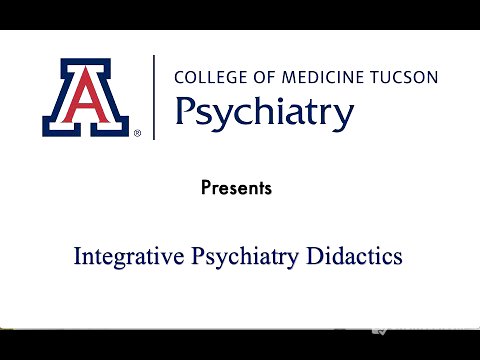TLDR;
Dr. Aaron Beck, interviewed by his daughter Dr. Judith Beck, recounts his journey from neurology to psychiatry and the development of cognitive therapy. He discusses his early skepticism towards psychiatry, his psychoanalytic training, and the research that led him to formulate the cognitive model of depression. He also shares insights into suicide prevention, the application of cognitive therapy to schizophrenia, and the transdiagnostic approach to mental disorders.
- Transition from neurology to psychiatry driven by personal analysis and dissatisfaction with the psychoanalytic establishment.
- Development of cognitive therapy spurred by research on depression and clinical observations challenging psychoanalytic theories.
- Cognitive therapy's effectiveness demonstrated through clinical trials, including successful interventions for severe depression and suicidal behavior.
- Application of cognitive therapy extended to schizophrenia, addressing both positive and negative symptoms through targeted interventions.
- Transdiagnostic approach emphasizes common cognitive processes across disorders, with specific beliefs differentiating each condition.
- Dissemination efforts focus on training therapists in evidence-based practices, particularly in underserved communities.
- Future of cognitive therapy lies in integrating scientific findings, personalizing treatment approaches, and adapting to diverse patient needs.
From Neurology to Psychiatry [0:54]
Dr. Aaron Beck initially disliked psychiatry due to the prevailing views that patients were either psychotic or had psychopathic personalities, conditions deemed untreatable. He found neurology more appealing because of its scientific precision in locating brain areas responsible for neurological symptoms. However, a mandatory psychiatry rotation during his neurology residency led him to question his path. Encouraged by friends, he spent additional time in psychiatry and explored psychoanalysis at the Austin Riggs Center, where he was influenced by the idea that psychoanalysis held answers to various human problems. Despite becoming a committed psychoanalyst, Dr. Beck grew disillusioned with the psychoanalytic establishment, finding it arbitrary and ritualistic.
Transition to Cognitive Therapy [7:06]
Dr. Beck's transition from psychoanalysis to cognitive therapy occurred in stages, driven by surprising incidents and research findings. He became interested in depression in the late 1950s, aiming to evaluate psychoanalytic notions through research. Psychoanalytic theory posited that depression resulted from repressed hostility turned inward, but there was no independent evidence to support this. Dr. Beck's research on the dreams of depressed patients, compared to non-depressed individuals, surprisingly revealed less hostility in the dreams of depressed patients. Instead, the dreams showed the depressed patients as subjects of unpleasant occurrences, leading Dr. Beck to initially interpret this as a need to suffer, or "masochistic dreams."
Development of the Theory of Depression [15:44]
Further studies contradicted the masochistic theory, showing that depressed patients sought reassurance and affection rather than suffering. This led Dr. Beck to rethink his approach and consider the dreams at face value, as representations of how patients perceived themselves and their experiences. He began exploring cognition and the role of negative thinking processes in depression. A pivotal moment occurred when a patient revealed that her anxiety stemmed from the thought of boring Dr. Beck, rather than the sexual content she was discussing. This led Dr. Beck to recognize a stream of preconscious, negative self-deprecatory thoughts that patients were not reporting.
Therapy for Depression [19:36]
Dr. Beck shifted his therapeutic approach, having patients sit up and focus on their automatic thoughts. He discovered that patients often misinterpreted his comments, and these misinterpretations fell into categories like selective abstraction, overgeneralization, and dichotomous thinking. Combining his research findings with clinical observations, Dr. Beck concluded that depressed patients had negative beliefs that acted as a prism, blocking positive information and distorting interpretations. Drawing from Albert Ellis's work, he began challenging patients' thinking, encouraging them to explore and evaluate their automatic thoughts. This approach led to significant improvements in patients, with many experiencing relief in as few as 10-12 sessions.
Testing Cognitive Therapy [25:07]
Dr. Beck's colleague, John Rush, encouraged him to conduct a clinical trial to validate cognitive therapy. The first randomized controlled study compared cognitive therapy with Tofranil for depression. The results showed that cognitive therapy was as effective as medication, and a follow-up study by Kovac indicated that cognitive therapy patients maintained their improvement better than those treated with drugs. Research has also shown that cognitive therapy can be effective for severe depression, even without medication. Behavioral activation, involving activities and positive experiences, is used to neutralize negative beliefs in severely depressed patients.
Longitudinal Cognitive Model of Depression [31:06]
Dr. Beck discusses the longitudinal course of depression and the factors contributing to vulnerability. Early research indicated that severe depression was often associated with the loss of a parent in childhood. However, not everyone with childhood loss becomes depressed, leading Dr. Beck to consider constitutional factors. Research in the year 2000 identified a variant of the serotonin transporter gene, the short form, which, when combined with childhood trauma, significantly increased the likelihood of depression. This genetic predisposition is associated with a negative cognitive bias, making individuals more likely to perceive negative stimuli.
Suicide Behavior Investigations [38:47]
Dr. Beck's suicide studies involved a systematic approach, including classification, evaluation, validation, prediction, and treatment. He observed a strong connection between hopelessness and suicidality, even in individuals who were not severely depressed. He developed a classification system distinguishing between suicide ideators, attempters, and completers, along with instruments to assess the degree of suicide ideation. Hopelessness was found to be a strong predictor of ultimate suicide. A 10-session cognitive therapy intervention for suicide attempters, followed by a year-long follow-up, significantly reduced reattempts compared to a control group.
Application to Schizophrenia [45:39]
Dr. Beck recounts an early case in 1952 where he successfully used psychotherapy with a patient experiencing delusions of being followed by the G-men. He later encountered research in Britain demonstrating the successful use of cognitive techniques with schizophrenic patients, particularly for positive symptoms like delusions and hallucinations. Cognitive therapy was applied by asking questions about the evidence for beliefs and exploring alternative explanations. However, negative symptoms, such as social withdrawal and inertia, were not adequately addressed. Dr. Beck and Paul Grant developed scales to assess defeatist attitudes and showed that these attitudes mediated the relationship between neurocognitive dysfunction and actual performance.
Transdiagnostic Approach [58:42]
Dr. Beck discusses the transdiagnostic approach, which emphasizes common cognitive processes across different disorders. He notes that cognitive therapy has always had a transdiagnostic element, recognizing that the same mind operates regardless of the specific diagnosis. The generic cognitive model serves as a template for identifying specific features across disorders. The key difference between disorders lies in the meanings that patients attribute to their experiences, which are related to their beliefs. Dr. Beck expands on Albert Ellis's ABC model, incorporating attentional fixation as a crucial element, particularly in panic patients.
Comorbidities [1:14:41]
Dr. Beck addresses the issue of comorbidities, particularly the co-occurrence of depression and anxiety. He explains that both depression and anxiety relate to damage to self-esteem, either psychological or physical. In depression, the damage has already occurred, leading to a negative self-image. In anxiety, the damage is anticipated, with individuals fearing that future situations will reveal their inadequacy. This overlap in underlying concerns explains why depression and anxiety often co-occur. He also discusses how a broad belief in vulnerability can lead to various anxiety disorders, while specific vulnerabilities result in specific phobias.
Dissemination of Cognitive Therapy [1:23:18]
Dr. Beck emphasizes the importance of disseminating cognitive therapy, particularly to underserved communities. He describes training programs for Master's level therapists in Philadelphia's Community Mental Health Centers, including workshops, intensive training with tape reviews, and web-based training. The Beck Institute offers monthly workshops and specialty workshops for various populations and disorders. Efforts are underway to spread cognitive therapy globally, with significant interest from Islamic countries. The Academy of Cognitive Therapy certifies therapists to ensure quality and competence in the field.
Future of Cognitive Therapy [1:30:41]
Dr. Beck envisions the future of therapy as being based on science, with empirically-based foundations and therapies derived from evidence-based theories. He anticipates a greater degree of personalization, potentially through genetic markers that predict response to different treatments. He sees cognitive therapy evolving by incorporating findings from various psychological disciplines, such as cognitive psychology, social psychology, and experimental psychology. The therapeutic relationship is viewed as a facilitator, with different Delivery Systems catering to autonomous and dependent patients.









